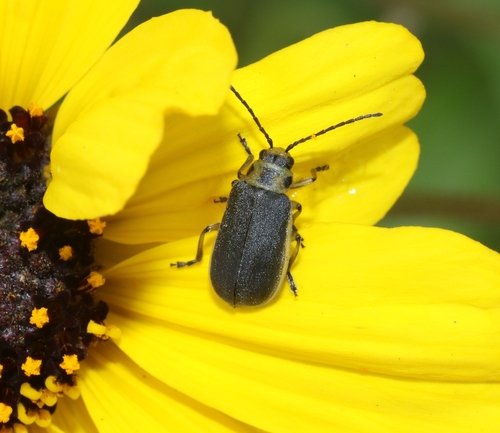Brittlebush
Encelia farinosa
Family: Asteraceae
Silvery shrub growing to about 4x4’. Daisy flowers can appear most any time of year but especially November through May.
Grow in full sun, provide low water when established, root hardy to 5° F. Leaves look more silvery in drier, sunnier locations. May look green with more shade or water. May need cutting back occasionally or may freeze back during cold spells. Water when rain has been scarce.
Flowers heavy in winter and spring, and is an important nectar source for pollinators that are active at that time, especially native bees, beetles, and butterflies. Desert tortoises love the flowers. Trirhabda geminata is a species of leaf beetle feeds exclusively on brittlebush foliage.
Used for toothaches and for pain; the gum was chewed by children, used to fasten arrow points, as a waterproofing gum, and melted down for a varnish. The gum exuded by this plant is sometimes used as incense, and the source of the Spanish name for this plant, incienso.
Photo by Sue Carnahan, SEINET
Encelia farinosa on iNaturalist
Encelia is named for Christoph Entzelt (1517-1583) a German naturalist; farinosa means mealy or powdery, referring to the foliage. Two varieties of E. farinosa are recognized by Flora of North America.
Encelia farinosa var. farinosa – yellow disc florets
Encelia farinosa var. phenicodonta – purple-brown disc florets
Varieties formerly included E. f. var. radians, now regarded as a separate species E. radians
This species also often hybridizes with Encelia californica and E. frutescens. There are 22 species of Encelia found in arid environments in southwestern North America and western South America.
Found on dry, rocky or gravelly slopes below 3,000 ft. in southwestern Utah, southern Nevada, Arizona, southern California; south into northwestern Mexico.
Especially in disturbed areas, hybrids like this occur (this is a hybrid between E. farinosa and E. frutescens), photo by birgitknorr on iNaturalist
Hybrids also occur between E. farinosa and E. californica, photo by James Bailey, iNaturalist
The Encelia Leaf Beetle (Trirhabda geminata) is entirely dependent on Encelia species. Photo by James Bailey, iNaturalist




